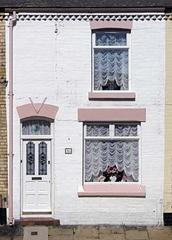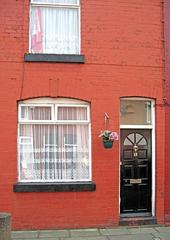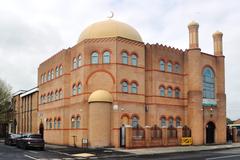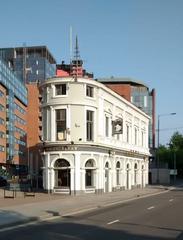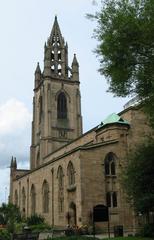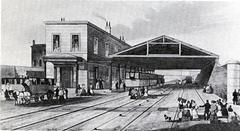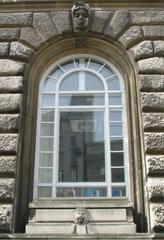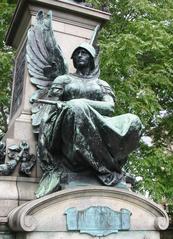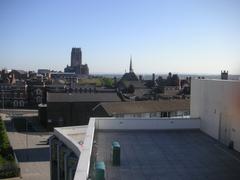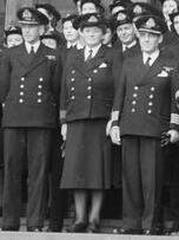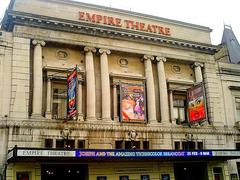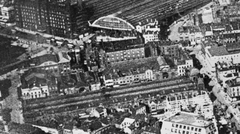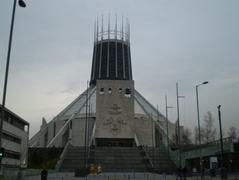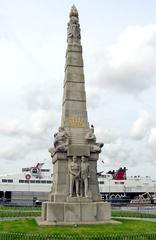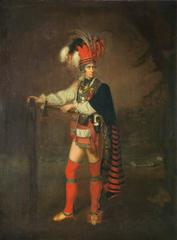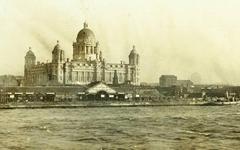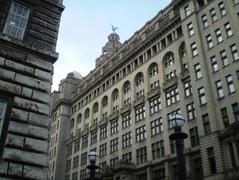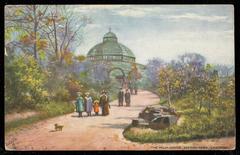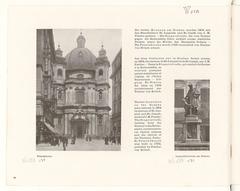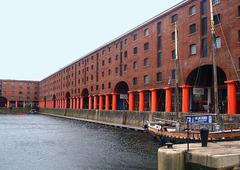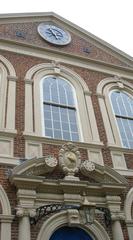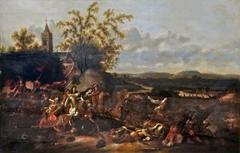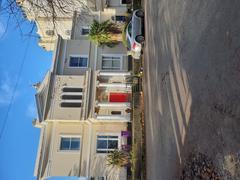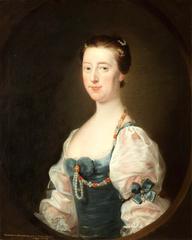
Croxteth Hall Visiting Hours, Tickets, and Liverpool Historical Sites Guide
Date: 04/07/2025
Introduction to Croxteth Hall and Its Significance
Croxteth Hall, located on the outskirts of Liverpool, United Kingdom, is an exceptional historical estate representing centuries of the region’s aristocratic and rural heritage. Originating as part of the royal hunting forest of Toxteth in the 12th century, it evolved from a simple Tudor hunting lodge into a grand country house, incorporating Tudor, Queen Anne, Georgian, Victorian, and Edwardian architectural styles. As the ancestral seat of the Molyneux family, Earls of Sefton, Croxteth Hall played a pivotal role in Liverpool’s social and political history for over four centuries. Today, it is both a preserved heritage site and a thriving community hub, welcoming visitors with its period interiors, expansive parklands, botanical treasures, and diverse public events.
The Hall’s original furnishings, grand staircases, and unique Edwardian features—such as servant bells and a hydraulic kitchen lift—bring to life the estate’s storied past. The Victorian Walled Garden and working Home Farm further immerse visitors in traditional horticultural and agricultural practices. Croxteth Hall also houses one of the world’s oldest botanical collections, recently boosted by new funding to enhance public access and conservation. As part of Liverpool’s City Halls, Croxteth Hall continues to host guided tours, educational programs, cultural events, and community activities, ensuring its status as a living monument and vital green space in the city (Historic Liverpool, Liverpool Echo, Liverpool City Halls).
Historical Overview
Early Origins and Medieval Landscape
Croxteth Park’s history stretches back to the 12th century, when it formed part of the royal hunting forest. Place names such as Croxtath (1228, 1297), Crocstad (1257), and Croxthat (1330) point to Old English origins meaning “Croki’s Staith,” or landing place (Historic Liverpool). For centuries, the area remained a rural landscape of dense woodland, marshes, and scattered ponds, with few buildings beyond Stand House, Gillmoss Chapel, and several cottages.
The Molyneux Family and the Rise of Croxteth Hall
The Molyneux family, descended from Norman knight William de Moulins, rose to prominence after the Norman Conquest, holding significant estates in Sefton and serving as hereditary constables of Liverpool Castle (West Derby Society). In 1575, they established Croxteth Hall as a Tudor hunting lodge, gradually expanding it into a grand residence. Architectural additions in Queen Anne, Georgian, Victorian, and Edwardian styles reflect the family’s growing influence and wealth (Liverpool Echo).
18th–19th Centuries: Rural Estate and Community Stewardship
Throughout the 18th and 19th centuries, Croxteth Park remained mostly rural, shielded from Liverpool’s rapid urbanization. The estate was managed as a private domain for hunting, with strategic lodges and kennels. The Molyneuxes were also influential in local governance, presiding over the West Derby Courthouse and shaping the nearby village (West Derby Society).
Edwardian Era and Family Decline
At its Edwardian peak, Croxteth Hall was a vibrant estate with about 60 servants, a top French chef, and extensive facilities including a bakery, brewery, and wine cellar. However, the early 20th century brought tragedy and decline: the 5th Earl suffered a riding accident, his successor lost his children in World War I, and the family line ended in 1972 with the death of Hugh Molyneux (Liverpool Echo). The Hall’s contents were auctioned in 1974, with many items preserved in local museums.
20th Century: Urban Encroachment and Preservation
While Liverpool’s urban expansion reached neighboring districts, Croxteth Park’s rural character survived, ultimately protected by city stewardship after the Molyneux family’s line ended (Historic Liverpool). Today, the estate’s period rooms, gardens, and farm remain a window into Liverpool’s aristocratic and rural past.
Architectural and Social Features
Croxteth Hall is a Grade II-listed building blending architectural elements from five centuries. Its Tudor core is complemented by a Queen Anne wing with elaborate brickwork, a Georgian façade, and Victorian-Edwardian interiors complete with sweeping staircases, servant bells, and fine period furniture (Liverpool Echo). The estate functioned as a self-sustaining world, with its own bakery, brewery, farm, and garden, supported by a large household staff.
Visiting Croxteth Hall: Essential Information
Croxteth Hall Visiting Hours
- April–September: Tuesday–Sunday, 10:00–17:00
- October–March: Tuesday–Sunday, 10:00–16:00
- Closed Mondays (except bank holidays) and Christmas Day
Ticket Prices
- Adults: £3.50
- Children (5–16 years): £2.70
- Seniors (65+): £2.70
- Family Ticket (2 adults + 2 children): £10.00
- Children under 5: Free
Tickets may be purchased on-site or online through the official Liverpool City Council website.
Guided Tours and Educational Programs
Guided tours run on weekends and bank holidays, offering in-depth exploration of the Hall’s history, architecture, and social life. Group and school visits can be arranged for specialized educational programs.
Accessibility
- Wheelchair access to most ground-floor rooms and park areas
- Assistance dogs welcome
- Accessible parking near the main entrance
For specific needs, contact the visitor centre in advance.
Getting There
- By Car: Ample free parking on-site; enter via Muirhead Avenue East (West Derby Village)
- By Public Transport: Bus routes from Liverpool city centre
- Cycling & Walking: Multiple entrances with bike racks and accessible paths
Visuals and Media
Photography is encouraged. Virtual tours and interactive maps are available on the official website.
Cultural and Community Significance
Croxteth Hall is central to the newly unified Liverpool City Halls identity, joining St George’s Hall and Liverpool Town Hall as spaces “for the people of this city and the moments that define us” (Liverpool City Halls). The Hall hosts weddings, exhibitions, guided tours, and public events, ensuring it remains a vibrant community venue. Croxteth Country Park, encompassing the estate, is a cherished green space, hosting weekly events like Parkrun, art shows, and wellness activities (Liverpool City Halls What’s On).
Botanical and Scientific Importance
Croxteth Hall’s botanical collection, housed in its walled gardens and glasshouses, is one of the oldest and most valuable in the world (Liverpool Echo). Its origins trace to Liverpool’s era as a global port, accumulating rare and exotic plants for medical, scientific, and horticultural research. In 2025, major funding secured a permanent home for the collection, expanding access and educational programming.
Heritage Preservation and Innovation
Ongoing restoration and interpretation projects, led by the Heritage Liverpool team, ensure Croxteth Hall’s continued relevance (Culture Liverpool). Recent initiatives include expanded public events, private tours, and new educational opportunities emphasizing the estate’s role in Liverpool’s story.
Role in Liverpool’s Identity and Tourism
Croxteth Hall is integral to Liverpool’s cultural landscape, offering something for everyone: immersive history, lush gardens, scientific collections, and family-friendly activities. Its inclusion in the Liverpool City Halls program and ongoing events make it a must-visit for residents and tourists alike (Liverpool City Halls What’s On).
Things to Do at Croxteth Hall
- Explore the Hall: Discover period rooms, family portraits, and original artifacts.
- Tour the Victorian Walled Garden: See heritage produce and rare plants.
- Visit Home Farm: Meet rare breed animals and learn about traditional farming.
- Enjoy the Country Park: Walk, cycle, or picnic in 500 acres of parkland.
- Participate in Events: Seasonal fairs, markets, and concerts are held throughout the year.
Facilities and Amenities
- Parking: Limited on-site (first-come, first-served); designated disabled spaces. Paid parking planned (Only in Liverpool).
- Toilets: Facilities near the Hall and visitor areas.
- Food and Drink: On-site café and picnic spots (UrTrips).
- Accessibility: Wheelchair access to most public areas.
- Guided Tours: 1.5–2 hours led by knowledgeable guides (TravelSetu).
- Gift Shop: Souvenirs and local products.
- Event Spaces: Available for private hire (TicketQuarter).
Ticket Prices and Admission
- Hall & Walled Garden: Adults £8.50; Concessions £7.00; Children (5–16) £4.50; under 5s free. Family tickets available.
- Country Park: Free entry.
- Events/Workshops: Additional charges may apply.
Tickets can be purchased on-site or online via the official Croxteth Hall website.
Opening Hours
- Country Park:
- April–October: 07:00–19:00
- November–March: 07:00–17:30
- Hall & Walled Garden:
- March 24–September 30: 10:30–17:00 (WhichMuseum)
Getting There
- Location: Croxteth Hall Lane, Liverpool, L12 0HB
- By Car: Use L11 1EH for Sat Nav (Muirhead Avenue entrance)
- By Bus: Nearest stop at Crompton Drive, a short walk through the park (Liverpool City Halls)
- By Train: Connect from Liverpool’s main stations to local buses.
- Cycling: Bike racks on-site.
Visitor Tips
- Check official website for event schedules and latest updates.
- Dress for changeable weather and outdoor activities.
- Book tours and event tickets in advance, especially during holidays.
- Dogs are welcome in the park (on leads); not inside Hall or Walled Garden.
- Photography is allowed in grounds and gardens; restrictions may apply inside the Hall.
Frequently Asked Questions (FAQs)
Are dogs allowed at Croxteth Hall?
Dogs are permitted in the park on leads, but not inside the Hall or Walled Garden.
Is Croxteth Hall wheelchair accessible?
Most public areas are accessible, though some historic sections have steps or uneven floors.
Can I take photographs?
Photography is welcome in the park and gardens; restrictions may apply in the Hall.
Are guided tours available?
Yes, and they can be booked in advance.
Is there parking on-site?
Limited spaces available; arrive early during busy periods.
Nearby Attractions and Accommodation
- West Derby Village: Historic pubs, shops, and the West Derby Courthouse (Local Country Parks).
- Liverpool City Centre: Museums, galleries, shopping.
- Hotels: The Suites Hotel Liverpool is nearby (UrTrips).
Safety and Regulations
- Supervise children near water and animals.
- Follow signage and stay on marked paths.
- Dispose of litter responsibly.
- In emergencies, contact park staff or local emergency services.
Contact and Further Information
- Official Website: Croxteth Hall and Country Park
- Social Media: Find the latest news and events.
Visual Gallery
Note: Images are representative. Visit the official website for virtual tours and current maps.
Summary and Visitor Recommendations
Croxteth Hall remains a cornerstone of Liverpool’s cultural and historical landscape, offering a seamless blend of architectural heritage, botanical significance, and community engagement. Its active schedule of educational programs, seasonal events, and wellness activities ensures a dynamic and inclusive visitor experience. The estate’s globally recognized botanical collection, coupled with recent accessibility improvements, highlights Croxteth Hall’s enduring commitment to preservation and public enjoyment.
For the best experience, plan ahead: check current opening hours, book tours in advance, and use digital resources like virtual tours and the Audiala app. Croxteth Hall is more than a historic house—it is a living testament to Liverpool’s past, present, and future.
Sources and Further Reading
- Historic Liverpool - Croxteth Park
- West Derby Society
- Liverpool Echo - Croxteth Hall
- Liverpool City Halls
- Culture Liverpool
- Liverpool Echo - Botanical Collection Funding
- WhichMuseum - Croxteth Hall and Country Park
- TravelSetu - Croxteth Hall Guide
- Real Journey Travels - Croxteth Hall
- UrTrips - Croxteth Park
- TicketQuarter - Croxteth Hall Venue Info
- Only in Liverpool - Croxteth Hall
- Local Country Parks - Croxteth Hall Country Park
- Tourspilot - Things to Do in Liverpool



